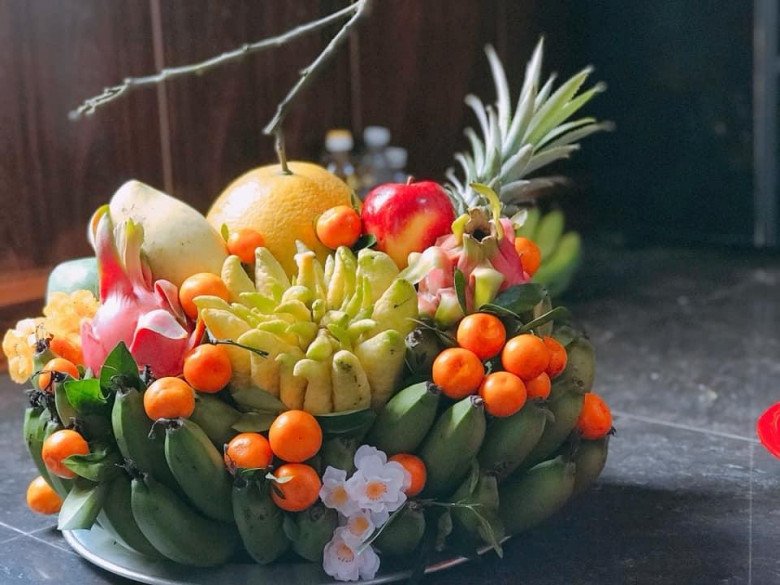The Buddha’s hand citro is a unique and beautiful fruit that is often included in the Vietnamese New Year’s fruit tray. Also known as “phật thủ”, this citrus fruit is believed to bring good luck and prosperity to those who display it in their homes during the festive season.
With its distinctive finger-like segments that resemble the open hand of the Buddha, the Buddha’s hand citro has a delicate and distinctive fragrance. While the fruit is not typically eaten fresh due to its white, pithy interior, it is highly valued for its aromatic properties and is used to make jams, syrups, medicines, and even candles.

Belonging to the citrus family, the Buddha’s hand citro has a beautiful, muted yellow color. The multiple small branches that form the “fingers” of the fruit are believed to symbolize the Buddha’s embrace, offering protection and blessings to those who display it. This symbolic fruit is considered sacred, and people often use it to worship Buddha and their ancestors, hoping for their continued presence and blessings of luck, wealth, peace, warmth, and joy throughout the year.
When arranging the Buddha’s hand citro on the New Year’s fruit tray, it is placed in the center and at the highest point, with the “fingers” pointing upward.
Given the significance of the Buddha’s hand citro, selecting the perfect fruit for the New Year is essential. Here are some tips to help you choose a beautiful and auspicious fruit:
Selecting the Buddha’s Hand Citro: Shape and Color
When choosing a Buddha’s hand citro, look for a large fruit with numerous, evenly spaced, and plump “fingers.” The ideal fruit will have its fingers curled inward, symbolizing protection and the preservation of luck and wealth for your family.

Some people prefer fruits with long, pointed fingers that spread outward, symbolizing ambition and a desire for growth and expansion. Ultimately, the choice depends on your personal beliefs and preferences.
When it comes to color, look for a fruit with a smooth, slightly muted yellow skin. This indicates a ripe fruit that will last longer and have a more intense fragrance.
Always choose undamaged fruits, avoiding those with bruises or scratches as they tend to rot quickly. Ensure that the “fingers” are intact and not broken, as broken fingers may be considered inauspicious.
Additionally, avoid unripe fruits, even if they have a yellow color. Ripe Buddha’s hand citros will have rounded oil glands evenly distributed across the surface, giving the fruit a firm and hard texture, along with a distinctive aroma.

Choosing the Buddha’s Hand Citro: The “Thịnh – Suy – Bĩ – Thái” Rule
When buying a Buddha’s hand citro, you may come across a unique selection criterion based on the number of “fingers” on the fruit. This rule, known as the “Thịnh – Suy – Bĩ – Thái” rule, is followed by those who wish to ensure the most auspicious fruit for their New Year celebrations.
“Thịnh – Suy – Bĩ – Thái” translates to “Prosperity – Decline – Adversity – Peace.” When counting the “fingers” on the fruit, start with the thumb as the first finger and count in this sequence, repeating it as needed until you reach the last finger. If the final finger falls on “Thịnh” or “Thái,” it is considered highly auspicious, and such fruits are often prized and can command high prices.

Storing the Buddha’s Hand Citro
To ensure that your Buddha’s hand citro stays fresh throughout the New Year celebrations, follow these simple storage tips: After purchasing the fruit, use white alcohol to gently wipe it down, removing any red spiders and other impurities that may be present. Be careful not to scratch the fruit’s surface during this process.
Avoid soaking or rinsing the fruit, as water can collect in the crevices between the “fingers,” leading to faster spoilage. Instead, use a damp cloth to gently clean the fruit.




































